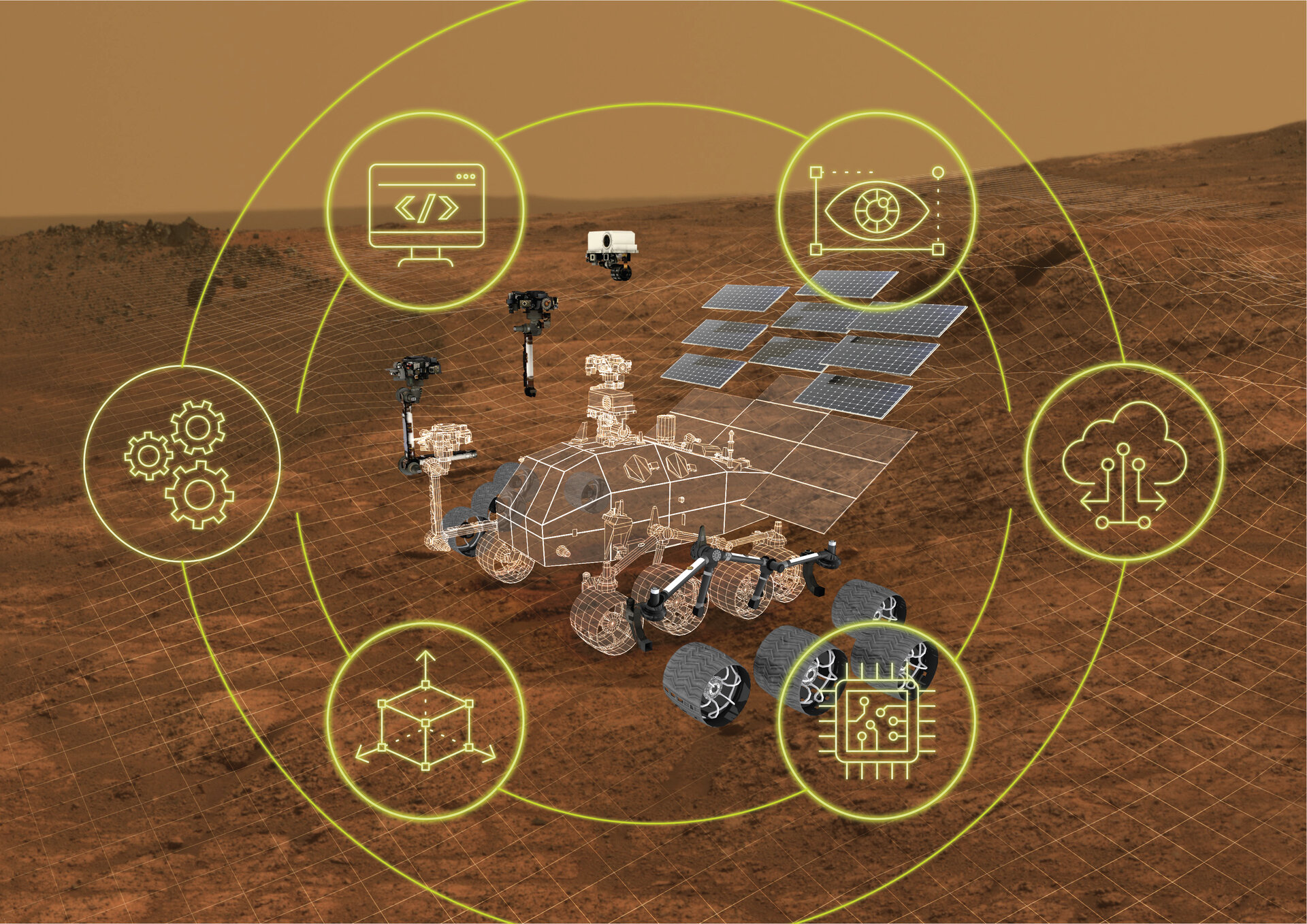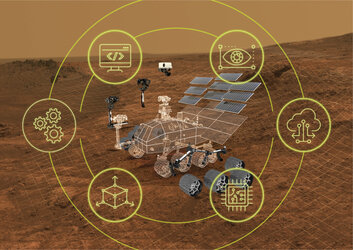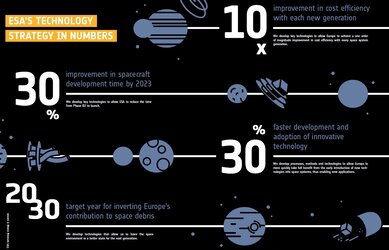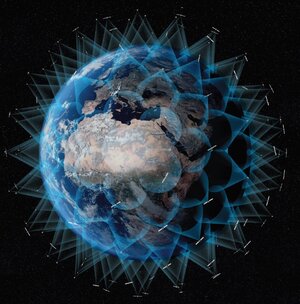Model-based system engineering
Targets set out in ESA’s Technology Strategy require a fundamental revolution in the way that technology is developed. Model-based system engineering (MBSE) could be the answer.
Traditionally, system engineering is based on documents, but space systems are becoming too elaborate to manage with documents alone. The workings of a space mission are increasingly complex, entangled, and full of exceptions and dependencies, making text descriptions inadequate to describe their behaviour completely and consistently.
Over a decade ago, ESA began pushing core MBSE technologies and coordinating activities within Europe, with the aim to reduce documentation, make data more accessible, and ensure digital continuity throughout the lifecycle of a space mission, across disciplines and throughout supply chains.
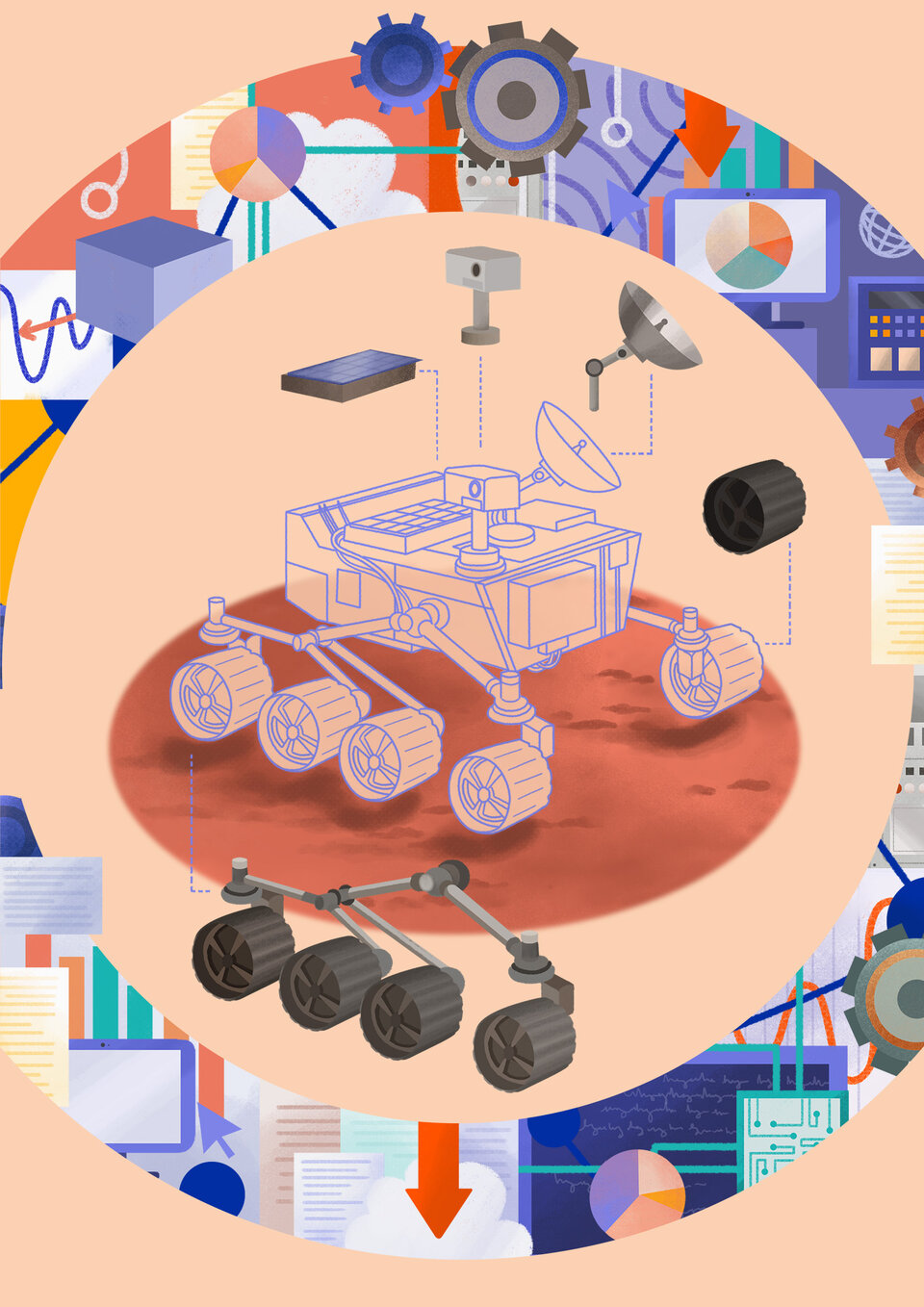
But what exactly is MBSE?
Let’s start with systems engineering. Many separate elements go into making a space system, with individual subsystems developed by specialist teams. System engineers focus on the space system as a whole. By incorporating needs and requirements, they design the architecture of a system, define its building strategy and oversee the integration of subsystems, as well as the verification and validation of the overall system, to form the final result.
Model-based system engineering builds a project using models to describe all the different subsystems and elements, rather than documentation. Information that would usually be included in documents is expressed in a more structured and digitally processable way – as diagrams and tables, for example, rather than as words. This allows it to be more easily processed by computers and used within different software tools.
Models can be developed, reused, and they have inputs and outputs. And like the transition from analogue to digital, the transition from documents to models will make space projects much more efficient.
“MBSE and the digital spacecraft are important contributors to the improvement of development time and cost efficiency targets. In particular, industrial actors have recognised the added value of MBSE in streamlining the design, development, deployment and verification of space systems.” – ESA Technology Strategy

What is Discovery & Preparation doing in this area?
There is some way to go before MBSE can be adopted seamlessly at every stage of every mission. The Discovery & Preparation elements of ESA’s Basic Activities are supporting ESA and European industry to speed up the process.
The Preparation element performs mission feasibility studies that guide the selection of new mission concepts. Since 2021, MBSE has been the default baseline approach to all new mission studies funded by Preparation. Even before this date, Preparation applied MBSE in various development phases of future ESA missions, including for EnVision, the Security And cryptoGrAphic mission (phase A/B1), Lunar Communication and Navigation Service (phase A/B1) and Mars Sample Return (phase B2).
The Discovery element, meanwhile, performs early research on novel topics and technologies. In 2019, Discovery called on industry and academia to propose novel ways to boost the introduction of MBSE into the space sector. 83 ideas were submitted, all proposing to develop key aspects of MBSE and apply it in new ways.
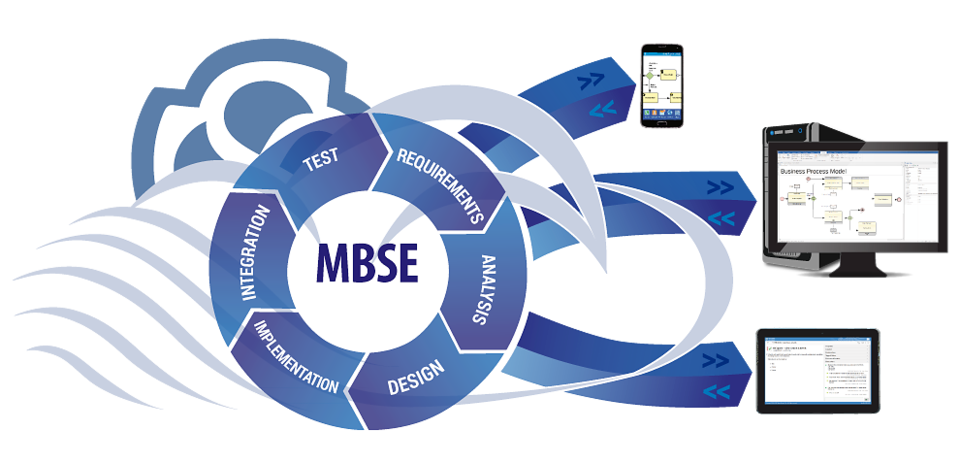
In total, 24 ideas were selected for funding; links to all their descriptions and results can be found here. They include an end-to-end system engineering portal that supports users to integrate and transfer data across different tools, using MBSE to reverse-engineer ESA’s OPS-SAT space laboratory and improve OPS-SAT-2, and making MBSE easier for systems engineers to use.
Several of the activities focused on using computers to analyse the language used in traditional engineering texts and represent the content instead as ‘knowledge graphs’ that can store interlinked concepts. This supports MBSE in particular, and knowledge management more generally.
It’s important that we develop and use MBSE in an efficient way. In an effort to bring together different approaches to MBSE, a previous Discovery study had already supported GMV to combine insights from the three major European space system integrators (Airbus Defence and Space, Thales Alenia Space and OHB System) on their MBSE activities. The aim was to increase the potential for different MBSE approaches to efficiently work together, and to ensure a seamless exchange of MBSE-related information between different stakeholders. The project proposed and implemented solutions to consolidate MBSE activities in Europe (website).
One of the more recent set of 24 studies further contributed to ensuring the smooth and efficient advancement of MBSE across the space sector; CGI and OHB identified a way to harmonise the different approaches of ESA and large space companies, and compiled the information into an MBSE best practices handbook.
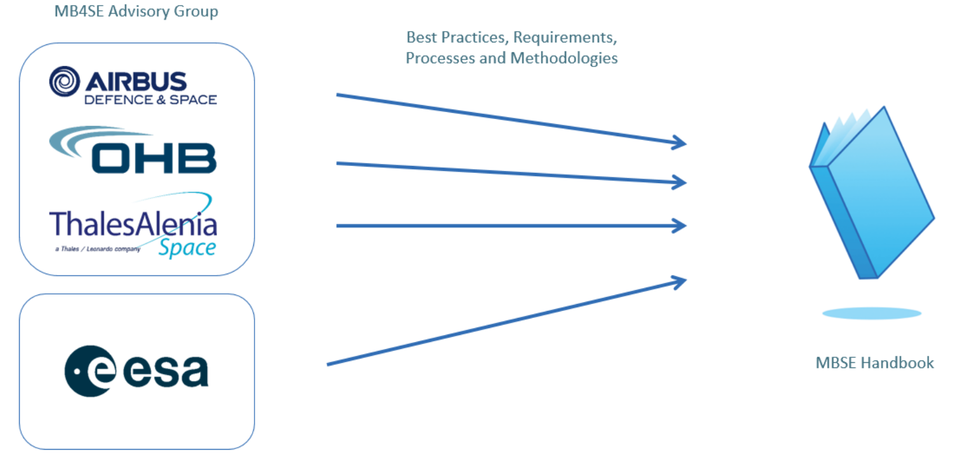
What else is ESA doing?
MBSE and the ‘Digital Spacecraft’ concept more generally, is about drastically changing the way that ESA and industry work together, switching from a 100% customer-supplier relationship, towards a more co-engineering approach. This means that it comes with higher transparency and trust, clearer objectives, and a stronger partnership.
ESA Agenda 2025 outlines the challenges ahead in maintaining and growing Europe’s role in the space economy. It states that:
“ESA projects are characterised by heavy engineering efforts from geographically dispersed teams in ESA and industry. Digital continuity throughout the life cycle of projects allows the substantial reduction of cost and errors, and will shorten schedules. ESA will therefore digitalise its full project management, enabling the development of digital twins, both for engineering by using Model Based System Engineering, and for procurement and finance, achieving full digital continuity with industry.”
ESA is coordinating industry to work together despite each company using its own tool. As part of this goal, ESA and industry worked together to create an MBSE technology roadmap in 2019.
In the same year, the model-based for system engineering (MB4SE) advisory group was set up with the aim to deploy MBSE in space projects by coordinating MBSE efforts carried out through ESA R&D programmes and in industry. The group consists of ESA, the French, Italian and UK space agencies, and the German Aerospace Center, as well as three large European space companies – Airbus Defence & Space, Thales Alenia Space, and OHB. It advises ESA on the technical aspects of MBSE research and development and ensures that the efforts of space agencies and industry converge towards the same shared vision.
One example of the MBSE advisory group’s work was to define the ‘MBSE Hub’, a virtualised central space that enables different MBSE tools to work together. A version of the Hub is now being developed by RHEA Group; it will allow the exchange of data between different groups using a common language.
ESA is continuing to develop MBSE through two of its technology R&D programmes – the Technology Development Element and the General Support Technology Programme.
ESA is already using MBSE increasingly for space missions. Euclid, Plato, Ariel, ClearSpace-1, TRUTHS, the European Large Logistics Lander, Mars Sample Return, Argonaut, Earth Return Orbiter and Galileo have all benefited from the approach.

Euclid has been in development since 2012 and now forms the basis of how ESA uses MBSE for Science missions.
Another ESA mission that has seen an MBSE approach from the very beginning of its development is e.Deorbit. Although it has now been reborn as a space servicing vehicle, e.Deorbit had aimed to remove a large piece of ESA-owned space debris from orbit in an early demonstration of cleaning up our space environment. MBSE has been used to model the physical architecture, track verification methods, and establish ‘single truth’ data exchange at a system level; this was a first for an ESA mission, and has been a huge challenge. But it has also been a success, opening the doors to a broader application of MBSE when designing future missions.
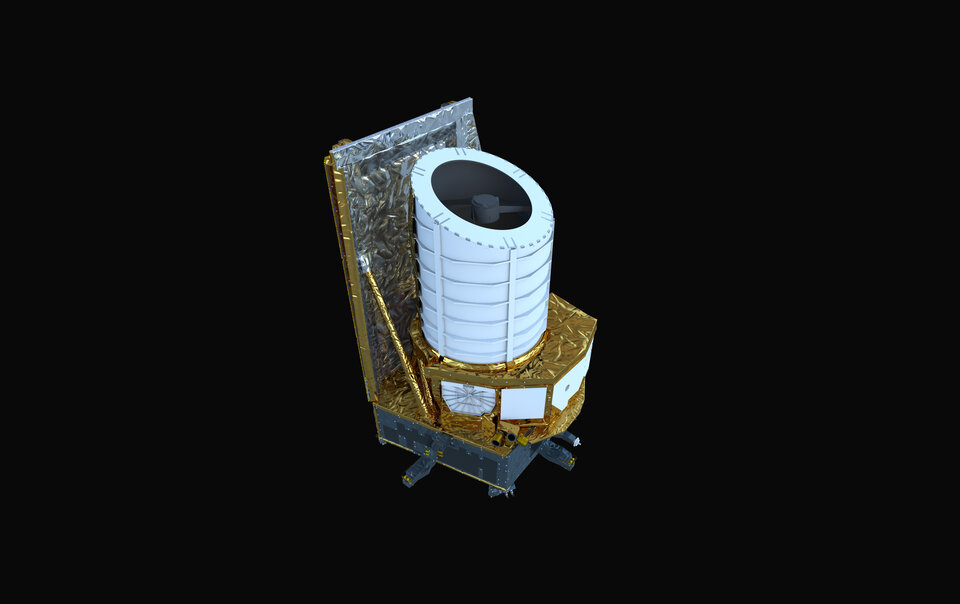
MBSE isn’t only useful for developing missions – it can be extended across their entire lifetime. ESA’s European Space Operations Centre (ESOC) in Darmstadt, Germany, is investigating its use to improve the efficiency of routine mission operations and mission planning.
In November 2022, ESA organised a workshop dedicated to MBSE together with aerospace company Airbus and French space agency CNES. During the workshop, companies and agencies exchanged experiences, lessons learned, and ideas about the way forward.
A more detailed summary of how ESA is using MBSE can be found here, including more information about its use in each of the missions mentioned above.
What are other space agencies doing?
The Japanese Aerospace Exploration Agency’s (JAXA’s) Engineering Test Satellite-9 is a demonstration satellite that aims to achieve next generation geostationary satellite communication. Due to launch later in the 2020s, the project team is applying MBSE to manage the complex operations of the satellite. More generally, JAXA’s R&D Directorate is using and accumulating knowledge in MBSE to support future projects.
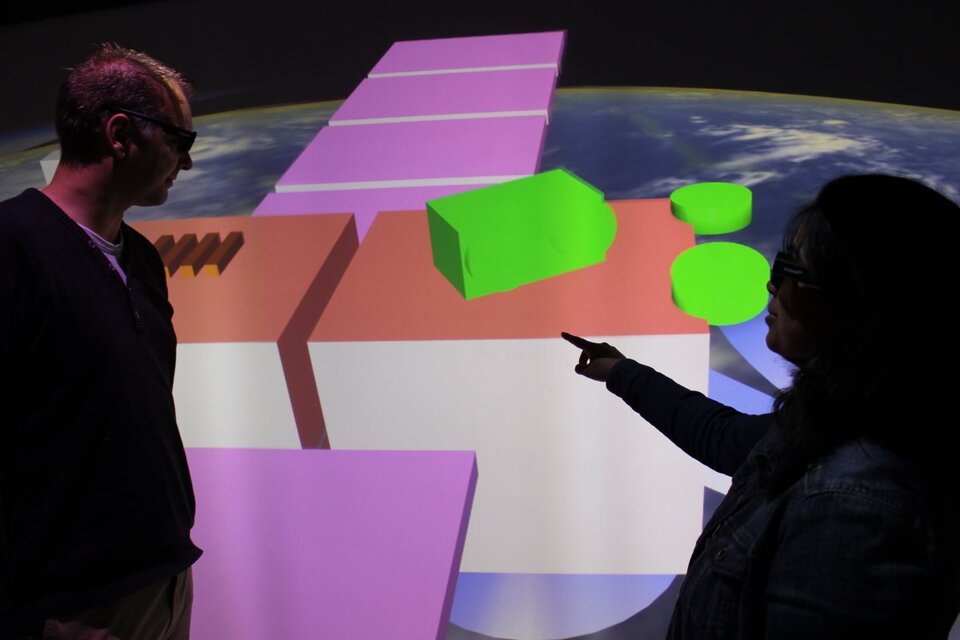
Meanwhile, the Institute for Software Technology at the German Aerospace Center (DLR) has developed a tool for MBSE called Virtual Satellite. This tool supports the common effort for a uniform digital representation. Continued evolution and integration of the Virtual Satellite software family builds the backbone of DLR’s MBSE activities. For example, DLR’s Galileo Competence Center is using Virtual Satellite for the modelling of the planned project COMPASSO. On board the International Space Station (ISS), COMPASSO will test optical technologies and compare their performance with existing systems.
Over the past five years, NASA has been laying the groundwork to increase its use of MBSE in its space missions. This process has included providing software licences, interviewing industry, academia and other organisations, and creating a 20-year vision and roadmap for the use of MBSE within the Agency. NASA is also working specifically on several initiatives to advance System Modelling Language – or SysML, the modelling language that MBSE uses to communicate the abstract ideas captured within the models.
Last updated: 23 August 2023


